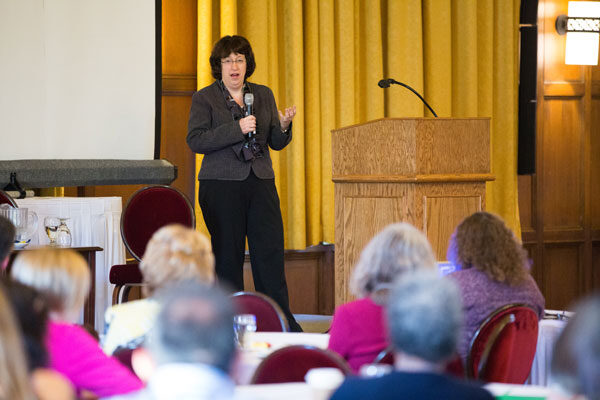
Steven Skerlos relishes teaching his engineering students more now because he “flipped” his class.
Skerlos, professor of mechanical engineering, no longer devotes his entire class time to lecturing and making PowerPoint presentations, which he says can be energy-draining. Instead, he assigns readings and videos, and students must answer questions or solve problems prior to class – a process that is invigorating because students are more likely to retain the material learned.
“Flipping gives us (professors) energy because students are engaged and interested so it just fires you up for the next class,” said Skerlos, who also is a professor of civil and environmental engineering.
Skerlos and faculty across many disciplines talked about flipping during a recent Provost’s Seminar on Teaching at the Michigan League. The event enabled participants to share and discuss strategies for flipping, as well as learn from faculty who have already adopted the concept.
Flipping has become more widely used because students can use technology outside of class, which leaves time for more classroom discussions and collaborations, said Martha Pollack, provost and executive vice president for academic affairs.
Faculty members often seek new ways to engage students, who sometimes are bored or disengaged in traditional lectures. In a flipped class, students watch videos, listen to podcasts and read before lectures.
When they come to class, a significant portion of time is freed up to discuss the lessons and ask questions about material they didn’t understand. In other words, there is increased active learning and student engagement.
“Student engagement is critical to the learning process,” said Constance Cook, associate vice provost for academic affairs and executive director at the Center for Research on Learning and Teaching.
The CRLT event, which had about 190 participants, included a moderated panel discussion with four faculty members who use the concept.
Panelist Libby Brough, a clinical instructor in the School of Nursing, has her students listen to podcasts and read peer-reviewed articles to prepare for class. To ensure students are accountable and understand the content, there is a quiz each week. In addition, students work through case studies in groups, often presenting their analyses to the entire class, she said.
In the breakout sessions, participants discussed ways to apply strategies for flipping classrooms in their own disciplines.
In one session, some of them raised questions about managing their workload, especially if more quizzes are given each semester; ways to teach a large classroom with hundreds of students versus a smaller one; and getting push-back from students who might not want to participate in this learning format.
Comparing his students prior to implementing flipping, Skerlos said his recent students have performed better on their exams because they are more engaged in the work.
Some panelists and CRLT staff advised participants interested in flipping classes to find faculty members who already incorporate the concept in their teachings. In addition, the CRLT staff is available for one-on-one and group sessions about flipping.



